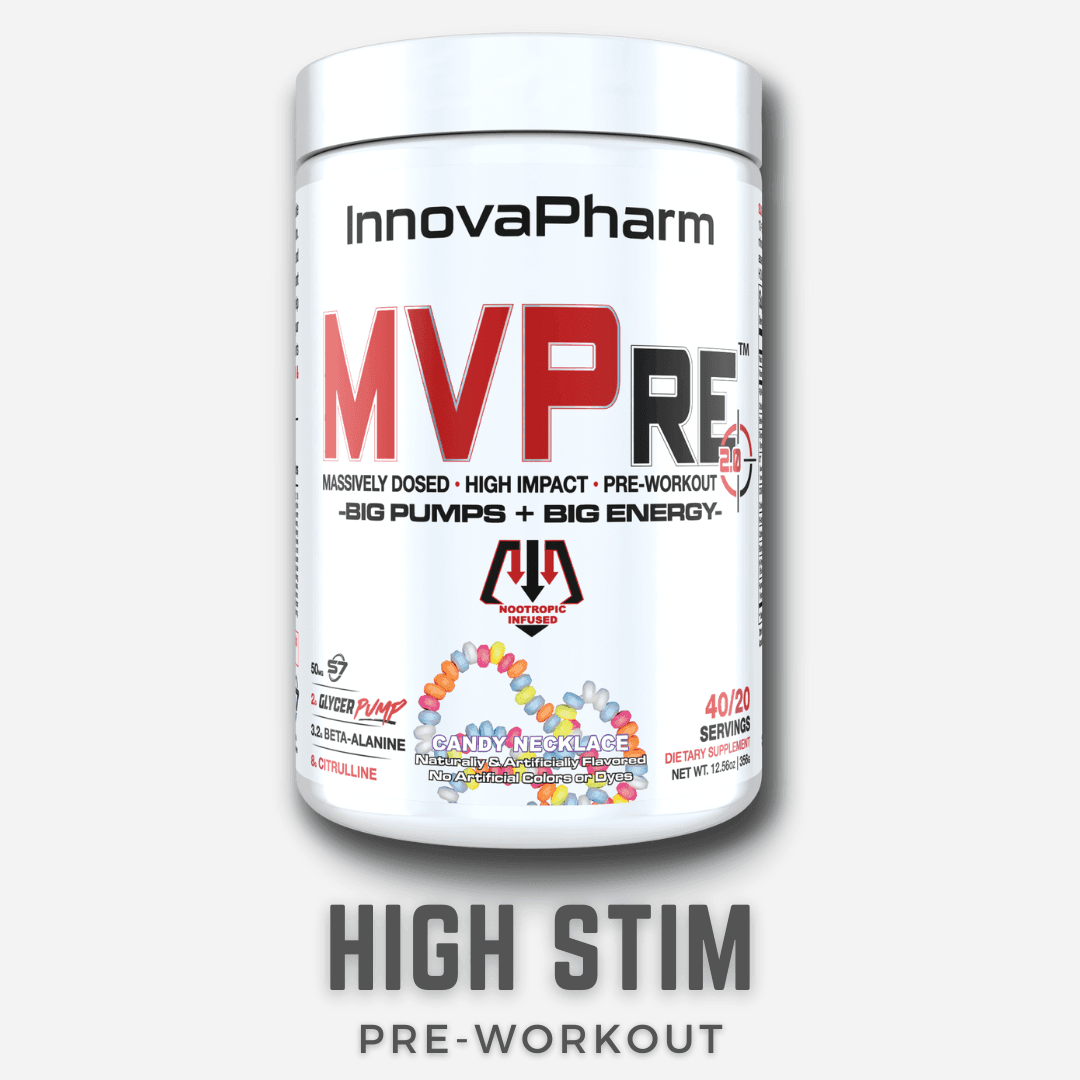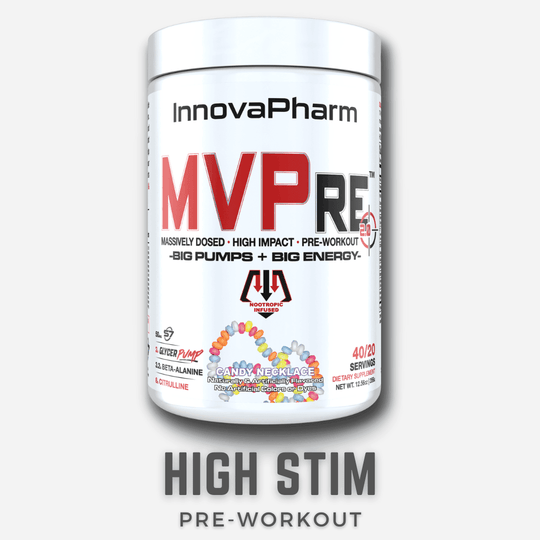5 Ways to Improve Your Squat: Tips for Better Form and Strength

The squat is a foundational compound exercise that should be a staple in any well-rounded fitness routine. Whether you're a seasoned lifter or just starting your fitness journey, mastering the squat can offer numerous benefits, including increased strength, improved mobility, and enhanced overall athleticism. However, achieving a proper squat can be challenging, and many individuals struggle with their form. In this blog post, we'll explore five effective ways to improve your squat, helping you unlock its full potential while minimising the risk of injury.
1. Perfect Your Squat Form
Before we dive into the nitty-gritty of improving your squat, let's first address the importance of proper form. Without a solid foundation, any progress you make will be limited, and the risk of injury increases significantly.
Key Elements of Proper Squat Form:
1. Foot Placement: Stand with your feet shoulder-width apart, with your toes pointing slightly outward. This position allows for better balance and engagement of the hip and knee joints.
2. Core Engagement: Keep your core tight and braced throughout the entire movement. A strong core stabilises your spine and helps maintain proper posture.
3. Hip Hinge: Initiate the squat by pushing your hips back and down, as if you're sitting into a chair. This movement ensures that your knees don't extend past your toes and helps protect your knees from excessive strain.
4. Knee Tracking: As you descend into the squat, ensure your knees track in line with your toes. Avoid letting them collapse inward, which can lead to knee pain and instability.
5. Depth: Aim to reach parallel or slightly below parallel, where your thighs are parallel to the ground or lower. Going deeper engages more muscle fibers and promotes better mobility.
6. Chest Position: Keep your chest up and your back straight throughout the movement. This prevents excessive forward lean and maintains proper spinal alignment.
7. Breathing: Inhale deeply as you lower yourself into the squat and exhale forcefully as you push back up. This helps maintain intra-abdominal pressure and stability.
8. Neutral Spine: Keep your head in a neutral position, aligning it with your spine. Avoid looking up or down excessively.
Mastering these key elements of proper squat form is essential before progressing to heavier weights or more advanced variations. Consider working with a certified personal trainer or experienced coach to ensure your form is on point.
2. Mobility and Flexibility Work
Many people struggle with their squat due to poor mobility and flexibility in their hips, ankles, and thoracic spine. Limited range of motion in these areas can hinder your ability to achieve proper squat depth and maintain good form.
Here are some mobility and flexibility exercises to incorporate into your routine:
1. Hip Flexor Stretch: Tight hip flexors can limit your ability to push your hips back in a squat. Perform hip flexor stretches to improve hip mobility.
2. Ankle Mobility Drills: Mobilise your ankles with exercises like ankle circles, calf stretches, and calf raises to ensure your heels stay planted during the squat.
3. Thoracic Extension Exercises: Enhance your thoracic spine mobility with exercises like foam rolling, thoracic extensions over a foam roller, and cat-cow stretches.
4. Third World Squats: Spend time in a deep squat position without weights to work on your squat mobility. Use a support, like a pole or door frame, to help with balance.
5. Dynamic Warm-Up: Prior to squatting, include dynamic stretches and mobility exercises such as leg swings, hip circles, and bodyweight squats to prepare your body for the movement.
Consistency is key when it comes to improving mobility and flexibility. Incorporate these exercises into your warm-up and cooldown routines, and over time, you'll notice significant improvements in your squat mechanics.
3. Strengthen Your Squat Muscles
To improve your squat, you need to strengthen the muscles involved in the movement. The primary muscles worked during a squat include the quadriceps, hamstrings, glutes, and lower back. Additionally, the core, calves, and upper back play supporting roles in maintaining stability.
Here are some exercises to strengthen these muscles:
1. Squats Variations: In addition to traditional squats, incorporate variations like goblet squats, front squats, and overhead squats to target different muscle groups and improve overall strength.
2. Deadlifts: Deadlifts are an excellent compound exercise that works the posterior chain, including the hamstrings and glutes. A strong posterior chain contributes to better squat performance.
3. Lunges: Lunges help strengthen individual leg muscles, improve balance, and address muscle imbalances that can affect your squat form.
4. Romanian Deadlifts: This exercise targets the hamstrings and lower back, helping to improve stability and strength in the squat.
5. Core Exercises: A strong core is essential for squat stability. Incorporate exercises like planks, Russian twists, and hanging leg raises into your routine.
6. Accessory Work: Include exercises that target specific weak points in your squat. For example, box squats can help improve your depth, and hip thrusts can strengthen the glutes.
7. Progressive Overload: Gradually increase the weight you lift as you become more comfortable with your form and strength. Progressive overload is key to continued improvement.
Remember to maintain good form and technique when performing these exercises to prevent injury and maximise your gains. It's also a good idea to have a structured workout plan that includes a mix of compound and accessory movements.
4. Address Common Squat Issues
Even with perfect form and strong muscles, some individuals may still encounter specific issues that affect their squat performance. Here are a few common problems and how to address them:
1. Butt Wink: A butt wink occurs when your lower back rounds at the bottom of the squat, potentially leading to injury. Address this issue by focusing on improving hip and hamstring flexibility and adjusting your squat depth to a point where you can maintain a neutral spine.
2. Forward Lean: If you tend to lean forward excessively during your squats, it may indicate a weak core or tight hip flexors. Strengthen your core and incorporate hip flexor stretches to improve your upright posture.
3. Knee Valgus (Knees Caving In): Weak hip abductors and tight adductors can cause your knees to collapse inward during the squat. Strengthen your hip abductors with exercises like clamshells and lateral leg raises, and work on hip mobility.
4. Ankle Mobility Issues: If your heels lift off the ground during squats, it's often due to ankle mobility limitations. Continue with ankle mobility exercises, and consider using weightlifting shoes with elevated heels to compensate.
5. Lack of Confidence: Some people struggle with squats simply because they lack confidence in their form or strength. Working with a knowledgeable coach or trainer can help you build confidence and make the necessary adjustments.
Remember that everyone's body is different, and what works for one person may not work for another. It's essential to assess your specific issues and tailor your approach accordingly.
5. Implement Proper Recovery Strategies
Recovery is a crucial but often overlooked aspect of squat improvement. Pushing your body to its limits during squats places stress on your muscles and joints, and recovery is necessary to prevent overuse injuries and continue making progress.
Here are some recovery strategies to consider:
1. Adequate Sleep: Ensure you're getting enough quality sleep, as this is when your body repairs and grows stronger.
2. Nutrition: Fuel your body with a balanced diet that includes adequate protein, carbohydrates, and healthy fats to support muscle recovery.
3. Hydration: Stay well-hydrated to aid in the removal of metabolic waste products from your muscles.
4. Active Recovery: Incorporate light mobility work, foam rolling, and stretching into your routine on rest days to promote blood flow and reduce muscle tightness.
5. Rest Days: Give your body sufficient time to recover between intense squat sessions. Overtraining can lead to injury and hinder progress.
6. Stress Management: High stress levels can negatively impact recovery. Practice stress-reduction techniques such as meditation, yoga, or deep breathing exercises.
7. Listen to Your Body: Pay attention to signs of fatigue, pain, or discomfort. If something doesn't feel right, don't push through it; adjust your training accordingly.
In conclusion, improving your squat is a multifaceted process that involves mastering proper form, enhancing mobility, strengthening key muscle groups, addressing common issues, and prioritising recovery. Remember that progress takes time, and it's essential to approach your squat journey with patience and consistency. Whether your goal is to increase your squat strength, improve your athletic performance, or simply move more efficiently in everyday life, these five strategies will help you unlock the full potential of this fundamental exercise. So, lace up your lifting shoes, hit the gym, and start squatting your way to a stronger and healthier you.


















